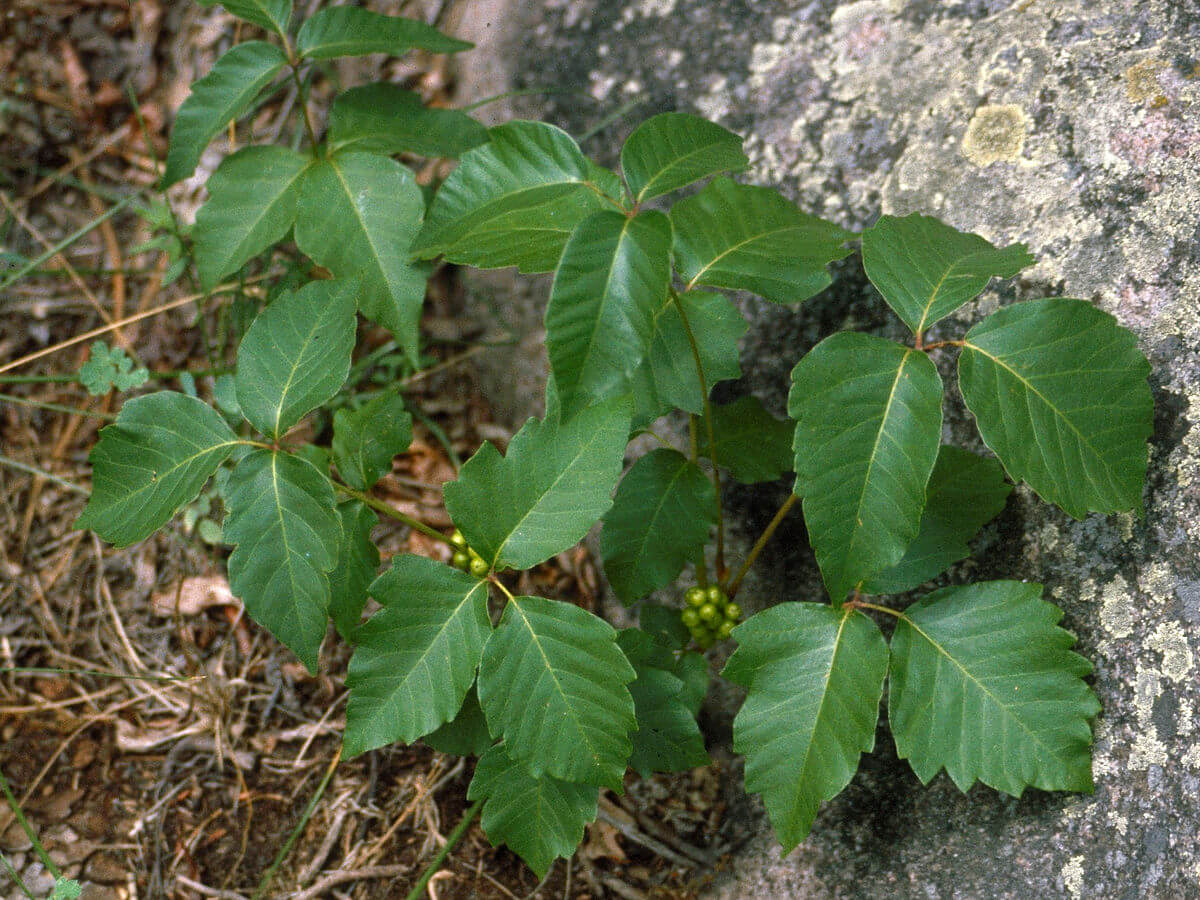World of Toxicodendron Radicans
Toxicodendron radicans, commonly known as poison ivy, is a fascinating and notorious plant that demands our attention. Knowing about Toxicodendron radicans is important for personal safety and environmental knowledge because it can cause severe allergic reactions.
Table of contents
- What is Toxicodendron Radicans?
- Physical Characteristics of Toxicodendron Radicans
- Habitat Preferences of Toxicodendron Radicans
- Types of Toxicodendron Radicans
- Toxicodendron radicans: The Poison Ivy
- Health Implications and Treatment
- Ecological Significance
- Mythbusting and Debunking Misconceptions
- Common Plants Confused with Toxicodendron Radicans
- Final Thought
- Youtube Video About Toxicodendron Radicans
- You May Also Like
- FAQ
What is Toxicodendron Radicans?
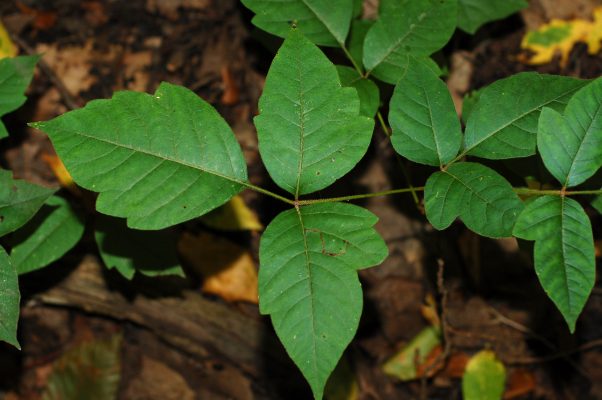
Toxicodendron radicans belongs to the family Anacardiaceae and is scientifically classified as a member of the Toxicodendron genus. It is an annual woody vine or plant that grows in many places in North America, Europe, and Asia.
There are several other species in the genus, such as Toxicodendron diversilobum (western poison oak) and Toxicodendron vernix (poison sumac).
By knowing how Toxicodendron radicans are classified, we can tell it apart from other species that are similar.
Physical Characteristics of Toxicodendron Radicans
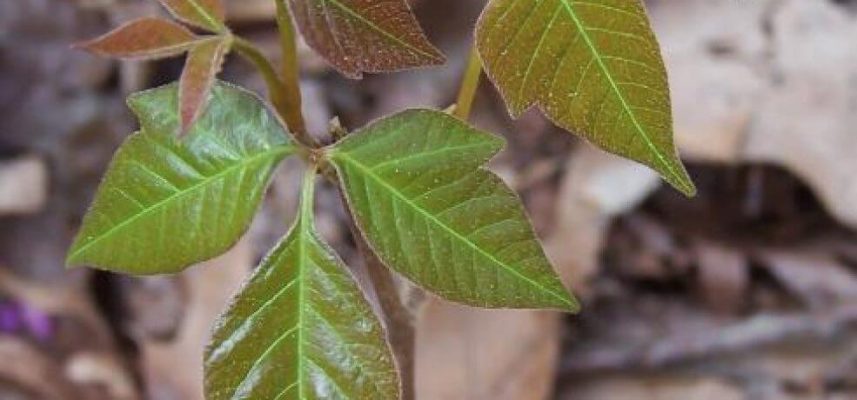
Toxicodendron radicans have leaves with three leaflets and roots made of wood. The leaves have three leaflets that can be of different sizes and shapes. The edges of the leaves can be smooth or cut, and they can be shiny.
The color of the leaves can change with the seasons. In spring and summer, they are green, but in fall, they turn bright shades of red, orange, or yellow.
The plant can grow as a low-lying bush or as a vine that climbs up trees or other buildings.
Habitat Preferences of Toxicodendron Radicans
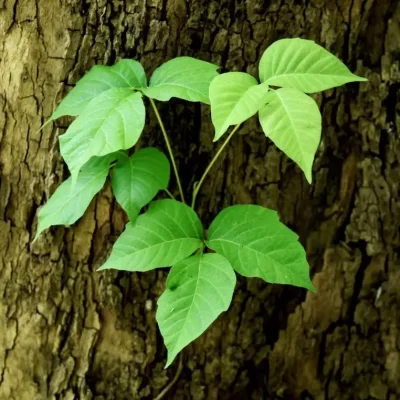
Toxicodendron radicans are adaptable and can grow well in many different places. It grows in wooded areas, fields, and along the edges of roads and paths. The plant does best in places with mild light, wet soil, and good drainage.
It can also grow in a wide variety of temperatures, from mild to subtropical. By knowing where it likes to live, we can find places where poison ivy is likely to be.
Types of Toxicodendron Radicans
This plant is found in many places in North America. It has three leaves that make it easy to recognize. Knowing about these differences can help us find and avoid this dangerous plant more easily.
Eastern Poison Ivy
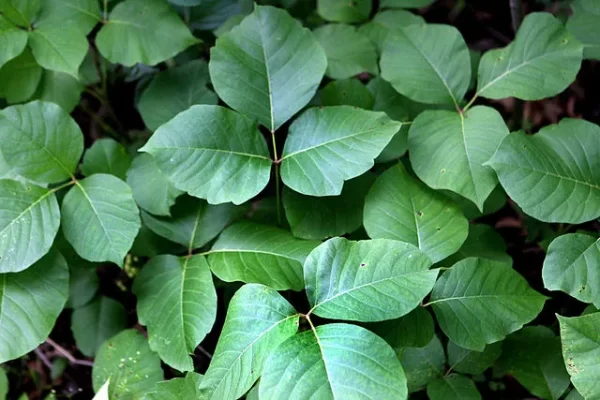
The Eastern Poison Ivy is the most common type of Toxicodendron radicans and is widespread in the eastern regions of North America.
Usually, you can find it in wooded places, along paths, and even in cities. This type grows in a lot of different ways, such as with plants that climb trees, bushes, or fences.
Most of the leaves are shiny and have pointed tips and jagged edges. In the spring, they are brown, in the summer they are green, and in the fall they are bright red, orange, or yellow.
Western Poison Ivy
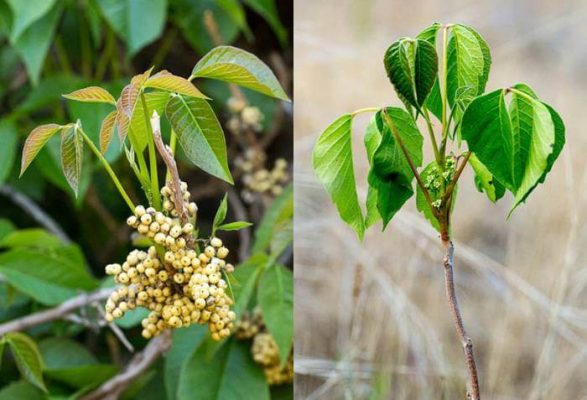
Western Poison Ivy is mostly found in the western parts of North America, as its name suggests. It does well in a lot of different places, like woods, fields, and even deserts.
Most of the time, this type grows as a low, spreading plant or vine. Compared to the Eastern type, the leaves of Western Poison Ivy are bigger and rounder.
They can be any shade of green, from light to dark, and sometimes have a hint of red.
Atlantic Poison Oak
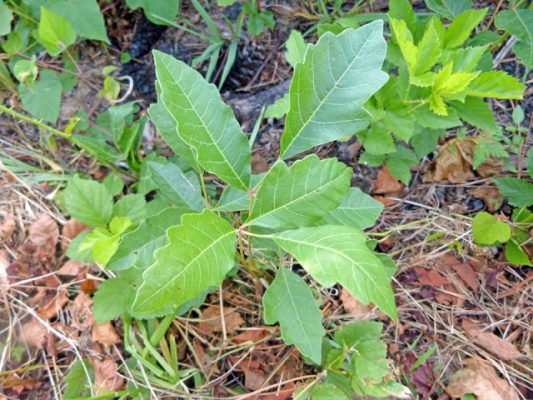
Although commonly referred to as “poison oak,” the Atlantic Poison Oak is actually a subspecies of Toxicodendron radicans. This type of plant is mostly found along the Atlantic coast, from New Jersey to Florida.
The Atlantic Poison Oak can grow as a bush or as a plant that grows up. It has leaves that look like those of Eastern Poison Ivy, but they are usually bigger and wider, like oak leaves. The leaves are green in the summer and orange-red in the fall.
Pacific Poison Oak
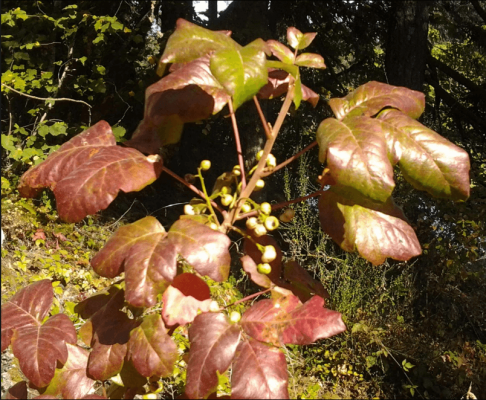
The Pacific Poison Oak is a plant that grows along the western coast of North America. It is related to the Eastern Poison Ivy. The most common places to find this kind are in California, Oregon, and Washington.
Pacific Poison Oak can be a bush or a woody plant that climbs up trees or forms thickets. It has glossy green leaves with deep lobes that look like oak leaves.
In the fall, the leaves turn bright red and orange, which adds to their beauty.
Toxicodendron radicans: The Poison Ivy
Allergenic Effects of Toxicodendron Radicans
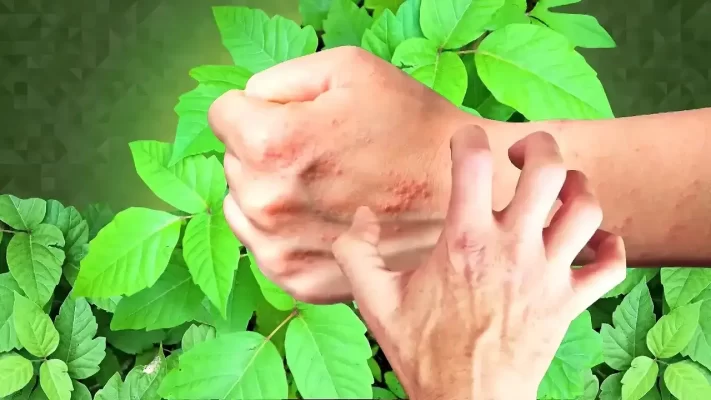
Toxicodendron radicans produce urushiol, a resinous oil found in its leaves, stems, and roots. Poison ivy makes people allergic because of a chemical called urushiol. Most people get an itchy rash, swelling, and boils when they come in contact with urushiol.
The intensity of these symptoms depends on how sensitive a person is to the oil and how much they were exposed to it.
Identification and Avoidance of Poison Ivy
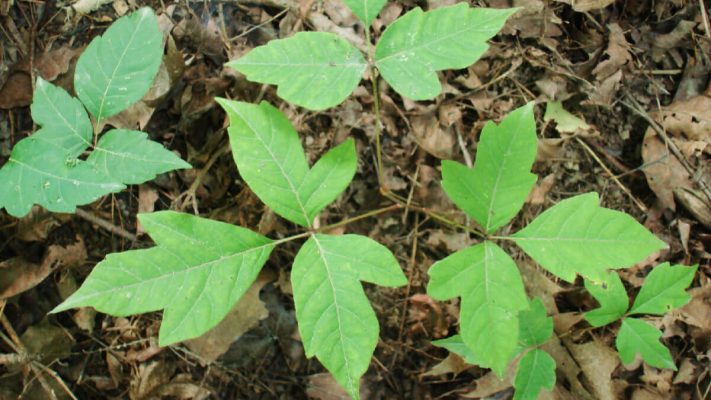
To avoid touch with poison ivy and possible allergic responses, it is important to know how to identify it correctly. Remember the saying “Leaves of three, let it be.”
Usually, there are three leaves on the stem of poison ivy, and they are all in a different order.
The leaves can have smooth edges or pieces that don’t match up. Poison ivy can grow in different ways, like as a growing vine or a bush that grows close to the ground.
It may also grow small, white fruits that look like berries.
When going into places where poison ivy might be, wear long sleeves, pants, and gloves to protect yourself.
If you touch poison ivy, wash your skin and clothes right away with soap and water to get rid of the oil from the plant.
Health Implications and Treatment
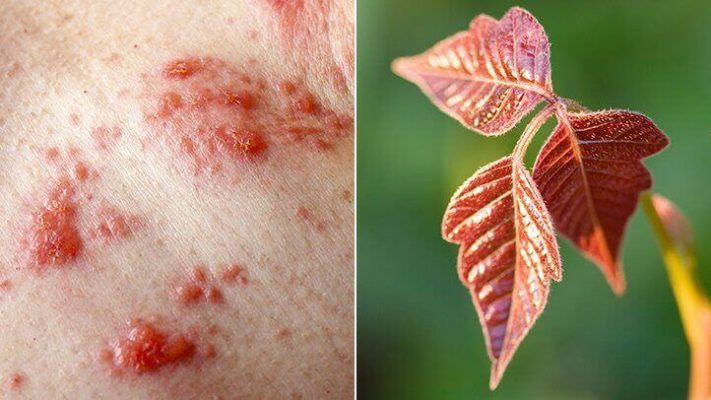
Reactions to Poison Ivy Exposure
Upon exposure to Toxicodendron radicans, individuals may experience varying degrees of allergic reactions.
Some of the most common signs are itching, redness, swelling, and boils filled with fluid. In very bad cases, the rash can spread and get bigger.
It’s important to see a doctor if the symptoms are serious or if the rash covers a big area of the body, affects the face or genitals, or makes it hard to breathe or swallow.
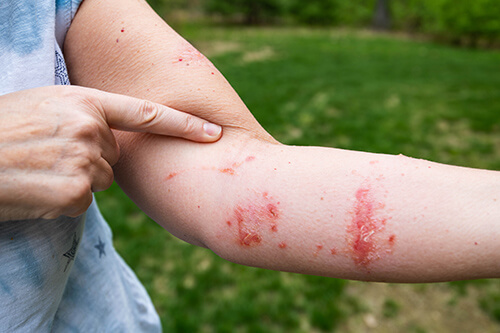
Treatment and Remedies
There are several ways to treat poison ivy so that it doesn’t hurt as much. Hydrocortisone creams or calamine lotions that you can buy over the counter can help lessen redness and itching.
You might also find relief from cold clothes and oatmeal baths.
Antihistamines taken by mouth can help stop itching and make it easier to sleep. In serious cases, a doctor may give you corticosteroids or other medicines to help you deal with the symptoms.
Ecological Significance
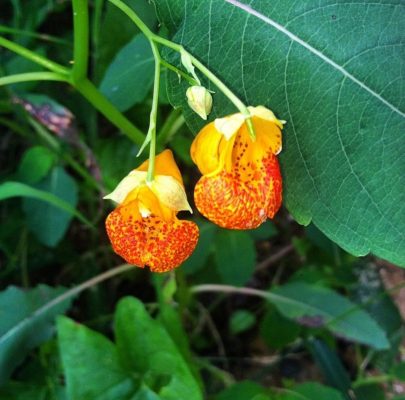
Role of Toxicodendron radicans in Ecosystems
Despite its notorious reputation, Toxicodendron radicans play a crucial role in ecosystems. Poison ivy seeds are spread when birds and other animals eat the berries.
Poison ivy grows in a thick mat that gives insects and small mammals a place to hide and live. It helps keep the natural balance and variety of the places where it lives.
Conservation Considerations
When dealing with poison ivy populations, it is important to think about how they affect the environment. Even though it might be tempting to get rid of all poison ivy, doing so can throw off the natural balance of an environment.
Careful management practices should aim to minimize human exposure while maintaining the ecological benefits provided by Toxicodendron radicans.
Mythbusting and Debunking Misconceptions
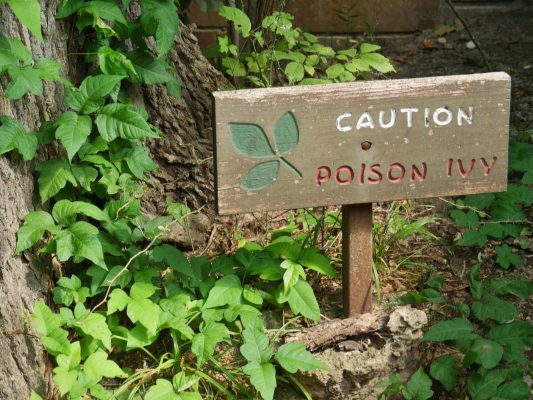
Common Misconceptions about Poison Ivy
There are some false ideas about poison ivy that need to be set straight. In spite of what most people think, poison ivy does not spread by being scratched or by wounds breaking. The rash happens when the oil comes in close touch with the skin.
Also, when poison ivy is burned, it can release harmful fumes that can cause serious reactions in the lungs. To keep things from getting worse, it is important to use correct information and clear up any misunderstandings.
Common Plants Confused with Toxicodendron Radicans
| Plant Name | Key Differences from Poison Ivy |
| Virginia Creeper | Five leaflets instead of three |
| Boxelder | Leaves are opposite and have a different leaf shape |
| Boston Ivy | Leaves are lobed and have a different arrangement |
| Fragrant Sumac | Leaves have a strong citrus scent and grow in clusters |
How to Say Toxicodendron Radicans
To say “Toxicodendron radicans” correctly you can divide it into syllables; Tox i co den dron rad i cans. The stress falls on the syllable in “Toxicodendron” and the first syllable, in “radicans.” Its pronounced as “tox ih koh DEN dron RAD ih cans.” This plant is commonly known as poison ivy. Is infamous for triggering reactions when its oil, urushiol comes into contact, with the skin.
Toxicodendron Radicans Seeds
Poison ivy, scientifically known as Toxicodendron radicans spreads by means of seeds that reside within its berries. These seeds are often dispersed by birds and animals who consume the berries and subsequently expel the seeds aiding in the growth of the plant.
It is important to handle these seeds with care due, to the presence of urushiol, an oil for causing skin irritation. When cultivating poison ivy from seeds it is crucial to wear gloves and ensure that they are planted away, from areas frequented by humans to avoid contact.
Final Thought
Toxicodendron radicans, commonly known as poison ivy, is a plant that demands our attention due to its allergenic properties. We can recognize and avoid poison ivy by learning its taxonomy, physical traits, habitat preferences, and health risks. Toxicodendron radical ecological importance helps us manage it responsibly.
We can improve safety and knowledge by eliminating myths and spreading facts. We should share this information to live in harmony with nature.
Youtube Video About Toxicodendron Radicans
You May Also Like
Philodendron Rugosum: A Guide to Care, Cultivation, and Benefits
FAQ
Pets seldom get rashes from Toxicodendron radicans. Fur protects them against urushiol oil. The oil can stick to their fur and spread to people. Washing your cat after poison ivy exposure reduces oil transfer.
Toxicodendron radicans is allergic year round, including winter. Urushiol oil is effective even when the plant is dormant or has fewer leaves in winter. Avoid poison ivy year-round.
Toxicodendron radicans sensitivity is individual. Some people respond strongly to slight exposure, whereas others don’t. After repeated exposures, sensitivity might grow. To reduce exposure, you must know your sensitivity.
Some people gain immunity to Toxicodendron radicans, while others become more sensitive. This immunity may not prevent subsequent responses. Even if you haven’t reacted to poison ivy before, avoid it.
Poison ivy may be removed from your property with caution. To avoid contact with the plant and oil, use long sleeves, pants, gloves, and eye protection. Consult local standards and consider hiring a professional for large infestations or if you are unsure about eradication methods. Unsafe removal might spread urushiol oil.




